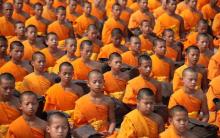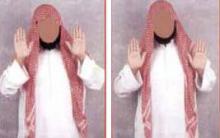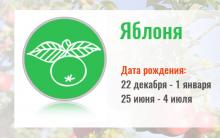Introduction
Perception is a reflection of objects and phenomena in the totality of their properties and parts with their direct impact on the senses. It includes the past experience of a person in the form of ideas and knowledge. Consider a puppy playing on the lawn. It has a certain shape, size and color; at each moment of time it occupies a certain place in space, located at a certain distance from us and in a certain direction; we see him now moving, now motionless; it looks like a dense body, that is, like an object whose surface can only be touched, unlike, say, water or the sky. The puppy's coloration is a property of the surface of his body, that is, his surface has a color. If it hits a small object, we get the impression that the puppy is causing it to move. All this is perceived by us with the help of vision. But we also hear his barking, and this sound has a certain pitch, volume and timbre and comes from a certain part of the space, in fact from the place where we see the puppy. We perceive it in the totality of properties, and from our past experience we know that we have a puppy in front of us. Perceived qualities such as color, size, etc. remain constant and do not depend on the fact that, for example, the image on the retina is constantly changing. Thus, it does not seem to us that in the shade the puppy changes its color or that its size increases or decreases depending on whether it approaches or moves away from us.
This can be explained by the fact that the process of perception proceeds in connection with other psychological processes of the personality: thinking (we are aware of what is in front of us), speech (we can realize that we are in front of us only when we can call the perceived image: a puppy), feelings (we relate in a certain way to what we perceive), will (we arbitrarily organize the process of perception in one form or another). All this leads to not quite adequate perception, to the distortion of the perceived object, including the distortion of the visual image, to the appearance of so-called illusions of vision.
Sensation is a reflection of the properties of reality, resulting from their impact on the sense organs and excitation of the nerve centers of the brain. The types of sensations are diverse: tactile, visual, vibrational, olfactory, etc. The qualitative feature of certain sensations is called their modality.
1. The difference between perception and sensation
External phenomena, acting on our senses, cause a subjective effect in the form of sensations without any counter activity of the subject in relation to the perceived impact.
The ability to feel is given to us and to all living beings that have a nervous system from birth. The ability to perceive the world in the form of images is endowed only by man and higher animals, it develops and improves in their life experience. In contrast to sensations, perception always appears as subjectively correlated with the existing reality, designed in the form of objects, outside of us. Sensations are in ourselves, while the perceived properties of objects, their images are localized in space. This process, characteristic of perception as opposed to sensation, is called objectification. Another difference between perception in its developed forms and sensations is that the result of the occurrence of a sensation is a certain feeling (for example, sensations of brightness, volume, balance, sweetness, etc.), while as a result of perception an image is formed that includes a complex of interrelated various sensations attributed by human consciousness to an object, phenomenon, process. In order for a certain object to be perceived, it is necessary to perform some kind of counter activity in relation to it, aimed at its research, construction and clarification of the image. Separate sensations are, as it were, “tied” to specific analyzers, and it is enough for the stimulus to act on their peripheral organs - receptors, for the sensation to arise. The image formed as a result of the process of perception implies interaction, coordinated work of several analyzers at once.
Perception, thus, acts as a meaningful (including decision-making) and signified (associated with speech) synthesis of various sensations received from integral objects or complex phenomena perceived as a whole. This synthesis appears in the form of an image of a given object or phenomenon, which is formed in the course of their active reflection.
Perception is a sensual reflection of an object or phenomenon of objective reality that affects our senses. The perception of a person is not only a sensual image, but also the awareness of an object that stands out from the environment and opposes the subject. Awareness of a sensuously given object is the main, most essential distinguishing feature of perception.
2. Types of perception
The image formed as a result of the process of perception implies interaction, coordinated work of several analyzers at once. Depending on which of them works more actively, processes more information, receives the most significant features that indicate the properties of the perceived object, and distinguish between types of perception. Accordingly, tactile, visual and auditory perception are distinguished.
2. 1. Tactile perception
Touch is a complex form of sensitivity, including both elementary and complex components. The former include sensations of cold, heat, and pain, while the latter are actually tactile sensations (touch and pressure). Peripheral apparatuses for the sensation of heat and cold are “bulbs” scattered in the thickness of the skin. The apparatus of pain sensations is the free endings of thin nerve fibers that perceive pain signals, the peripheral apparatus of sensations of touch and pressure is a kind of nerve formations known as Leisner's bodies, Vater-Pacchini's bodies, also located in the thickness of the skin. The receptor apparatuses just listed are distributed unevenly over the surface of the skin: the finer the sensitivity required for the operation of a particular organ, the more densely the corresponding receptor components are located on its surface and the lower the thresholds for distinguishing those signals that reach them, in other words, the more sensitive they are. The subtlety of sensitivity of various body surfaces is provided not only by the density of distribution of peripheral receptors in the corresponding areas of the skin, but also by the relative area of those areas of the post-central sections of the cerebral cortex, where fibers come from the corresponding areas of the periphery. The finer the function performed by a particular area of the skin, the greater the area occupied by its projection in the cerebral cortex. The most complex forms of tactile sensitivity are the sensation of localization of touch, distinctive sensitivity (sensation of the distance between two touches to close areas of the skin), sensations of the direction of skin tension (if the skin of the forearm is led to or away from the hand), sensations of the shape that is applied by touching the tip of the doer on the skin a circle shape or an image of a number. Complex forms also include deep sensitivity, which makes it possible to recognize the position of the passively bent hand or to give the right hand the position that is passively given to the left hand. In the implementation of these types of sensitivity, complex secondary zones of the postcentral sections of the cortex take part. To study different types of sensitivity, different techniques are used, for example: Taber's experiment, in which the researcher simultaneously touches two symmetrical points of the chest or face. The defeat of one of the hemispheres is revealed in the fact that the patient, who is well catching each individual touch, ignores one of the touches to symmetrical points, if both touches are given simultaneously. In this case, the sensation of touching a point opposite to the affected hemisphere usually falls out.
According to psychologists, the interaction of an individual with the environment can be carried out only if he has his own, individual "picture of what is happening." The subject, impartially forming the image of the object, carries out the process of mental reflection. Moreover, the image of an object in this case refers to the properties, phenomena, events of the external or internal world. What is a psychic reflection after all, and what is its meaning for the subject and for the person in the first place?
The essence of mental reflection.
Within the framework of the Soviet psychological school, representatives of the cultural-historical concept were engaged in the study of reflection. Mental reflection is understood there as an orienting-regulating process of formation of the conditions in which the activity takes place. The result of such a reflection of the psyche is an image, i.e. a subjective set of data about the external or internal world, allowing you to direct activities to meet the needs. An important remark should be made here: psychic reflection is always a process inextricably linked with the subject himself. The image is individual for that, that without the subject that created it, it has no meaning. In addition, the image is not static, it exists only at the moment of the direct process of reflection by mental processes. They, in turn, are inseparable and not isolated from each other. Ideas about the processes of the psyche as "thinking", "perception" or "imagination" is only a model of the psyche, in reality it is integral and unified.
Mental reflection serves to create a structured and integral image from dissected objects of reality.
B. F. Lomov singled out the levels of mental reflection:
- Sensory-perceptual is the basic level of constructing mental images, which arises in the process of development in the first place, but does not lose relevance in subsequent activities. The subject, based on the information received through stimulation by real objects, builds his own tactics of behavior. Simply put, a stimulus causes a reaction: an event occurring in real time affects the subsequent action of the subject, causes it.
- Presentation layer. An image can arise without a direct influence of the object on the subject's senses, i.e. it is imagination, memory. Due to the repeated appearance of the object in the subject's perception zone, some of the most important features of the first are remembered, eliminated from the secondary ones, which causes an image that is independent of the direct presence of the stimulus . A person learns to operate already with images of objects, relatively speaking, seen once before, not represented in the current situation. The main function of this level of mental reflection: planning, control and correction of actions in the internal plan, drawing up standards.
- Verbal or speech-thinking level. Operations of this level are even less related to the event series of actual time. The individual operates with logical concepts and techniques that have developed in the course of the cultural and historical development of mankind. Abstracting from his own direct experience, from imagination and memory of the events that took place in his life, he orients himself and builds activities based on the experience of mankind as a whole. Those and conclusions that were not made by him. This provides an opportunity to plan and regulate events of various directions and temporal remoteness, up to planning the life path of an individual.
Despite the significant difference between the third and first, initial levels: the processes of sensory and rational regulation of activity incessantly flow from one to another, forming a mental reflection in the variety of its levels and images.
The process of formation of certain conditions in which the activity of the individual takes place, or will take place, is a mental reflection. The result of such a reflection of the psyche is a completely subjective assessment of external or internal data about the world, which in general is some kind of model of the surrounding reality.
Such a subjective approach allows you to live and satisfy your personal needs. It is worth noting that mental reflection is necessarily a process associated with the subject in a direct way. However, ideas about the processes of the psyche through the prism of thinking, perception or imagination is only a model of the psyche, in reality it is more holistic.
The role of mental reflection is to create a single, more structured image from the various objects of the surrounding reality.
Levels of mental reflection
Sensory-perceptual. An individual, or subject, relying on the information that he receives as a result of stimulation of the senses by real objects, builds his own line of behavior, that is, reacts to events in the way he thinks he should act in this situation.
Presentation layer. Images can arise without the direct participation of other objects on the sense organs of the individual. In other words, there is imagination, an endless process of imaginative thinking. The essence of such a function is planning, self-control and correction of actions.
Verbal-logical thinking. At this level, the ongoing brain operations are even less related to the events of the current time, regardless of their relevance. The subject uses only logical concepts and techniques formed in the process of cultural and historical development of a person. He builds personal experience on the basis of those values that have developed on the basis of his mentality.
So, in the definition of subjectivity, the concept of bias of the subject participates. Psychologists have always been interested in the dependence of perception, thinking of the subject on his needs, internal attitudes. Thus, we can conclude that the concept of the psyche includes not only a reflection of the objects of reality, but also the concept of consciousness.
I am engaged in "Five with a plus" in the group of Gulnur Gataullovna in biology and chemistry. I am delighted, the teacher knows how to interest the subject, find an approach to the student. Adequately explains the essence of his requirements and gives realistic homework (and not like most teachers in the year of the exam, ten paragraphs at home, but one in the class). . We study strictly for the exam and it is very valuable! Gulnur Gataullovna is sincerely interested in the subjects she teaches, she always gives the necessary, timely and relevant information. Highly recommend!
Camilla
I'm preparing for "Five with a plus" for mathematics (with Daniil Leonidovich) and the Russian language (with Zarema Kurbanovna). Very satisfied! The quality of classes is at a high level, at the school there are now only fives and fours in these subjects. I wrote test exams for 5, I'm sure that I will pass the OGE perfectly. Thank you!
Airat
I was preparing for the exam in history and social science with Vitaly Sergeevich. He is an extremely responsible teacher in relation to his work. Punctual, polite, pleasant in communication. It can be seen that the man lives his work. He is well versed in adolescent psychology, has a clear method of preparation. Thank you "Five with a plus" for the work!
Leysan
I passed the exam in the Russian language with 92 points, mathematics with 83, social studies with 85, I think this is an excellent result, I entered the university on a budget! Thanks Five Plus! Your teachers are true professionals, with them a high result is guaranteed, I am very glad that I turned to you!
Dmitry
David Borisovich is a wonderful teacher! I was preparing in his group for the Unified State Examination in mathematics at the profile level, I passed by 85 points! although knowledge at the beginning of the year was not very good. David Borisovich knows his subject, knows the requirements of the Unified State Examination, he himself is a member of the commission for checking examination papers. I am very glad that I was able to get into his group. Thank you "Five with a plus" for this opportunity!
Violet
"Five with a plus" - an excellent center for preparing for exams. Professionals work here, a cozy atmosphere, friendly staff. I studied English and social studies with Valentina Viktorovna, passed both subjects with a good score, satisfied with the result, thank you!
Olesya
In the "Five with a plus" center, she studied two subjects at once: mathematics with Artem Maratovich and literature with Elvira Ravilievna. I really liked the classes, a clear methodology, an accessible form, a comfortable environment. I am very pleased with the result: mathematics - 88 points, literature - 83! Thank you! I will recommend your educational center to everyone!
Artem
When I was choosing tutors, I was attracted by good teachers, a convenient class schedule, free trial exams, my parents - affordable prices for high quality. In the end, we were very pleased with the whole family. I studied three subjects at once: mathematics, social studies, and English. Now I am a student of KFU on a budgetary basis, and all thanks to good preparation - I passed the exam with high scores. Thank you!
Dima
I very carefully selected a tutor in social studies, I wanted to pass the exam for the maximum score. "Five with a plus" helped me in this matter, I studied in the group of Vitaly Sergeevich, the classes were super, everything is clear, everything is clear, and at the same time fun and at ease. Vitaly Sergeevich presented the material in such a way that it was remembered by itself. I am very happy with the preparation!
Feeling and perception are closely related. Together they provide a sensual reflection of an objective reality that exists independently of consciousness and as a result of its impact on the senses. It is necessary to understand both the process of sensory reflection and the relationship between perception and sensations.
Perception is the process of a holistic reflection of objects, situations and events that occurs with the direct impact of physical stimuli on the senses. Sensation is a mental process that consists in reflecting the individual properties of perceived objects and phenomena of the material world, as well as the internal states of the body at the time of the direct impact of stimuli on the corresponding receptors.
The sense organs constitute the main channels through which information about the phenomena of the external world and the state of the body reaches the human brain. All sensations are the result of the activity of the sense organs, which, due to their specific structure, convert the energy of stimuli into the energy of sensations. Irritants are called objects and phenomena of reality that affect the human senses, and the effect of stimuli on the senses is irritation. Sensation arises as a reaction of the nervous system to a particular stimulus and, like any mental phenomenon, has a reflex character.
It is customary to distinguish five main types of sensations: smell, taste, touch, sight and hearing. This classification of sensations is fair, although not complete.
Singling out the largest and most significant groups of sensations, they can be divided into three main types: interoceptive, proprioceptive and ex geroceptive. interoceptive sensations, signaling the state of the internal processes of the body, bring irritation to the brain from the walls of the stomach and intestines, the heart and the circulatory system and other internal organs. This is the most ancient and elementary group of sensations. proprioceptive sensations provide signals about the position of the body in space and form the basis of human movements, playing a decisive role in their regulation. The third and largest group of sensations - exteroceptive sensations. They bring information from the outside world to a person and are the main group of sensations that connect a person with the external environment.
The whole group of exteroceptive sensations is usually divided into two subgroups: contact and distant sensations. Contact sensations are caused by an impact directly applied to the surface of the body, and the reaction of the corresponding perceiving organ. Taste and touch are examples of contact sensation. Distant sensations are caused by stimuli acting on the sense organs at some distance. These senses include the sense of smell and especially hearing and sight.
Different types of sensations are characterized not only by specificity, but also by general properties. These properties include: quality, intensity, duration and spatial localization. Quality is the main feature of a given sensation, which distinguishes it from other types of sensations and varies within this type of sensation. The intensity of sensation is its quantitative characteristic and is determined by the strength of the acting stimulus on the functional state of the receptor. The duration of sensation is its temporal characteristic. It is also determined by the functional state of the sense organ, but mainly by the duration of the stimulus and its intensity.
Just as a sensation does not arise simultaneously with the beginning of the action of the stimulus, it does not disappear simultaneously with the termination of its action. This inertia of sensations is manifested in the so-called aftereffect. A visual sensation, for example, has a certain inertia and does not disappear immediately after the cessation of the action of the stimulus that caused it. The trace from the stimulus remains in the form of a consistent image. This trace is the physiological basis of short-term memory.











Work with a manual wood router
Do-it-yourself coal melting furnace
DIY rowing machine
Stone and brick cutting machine
How to make a vibrating table for paving slabs with your own hands